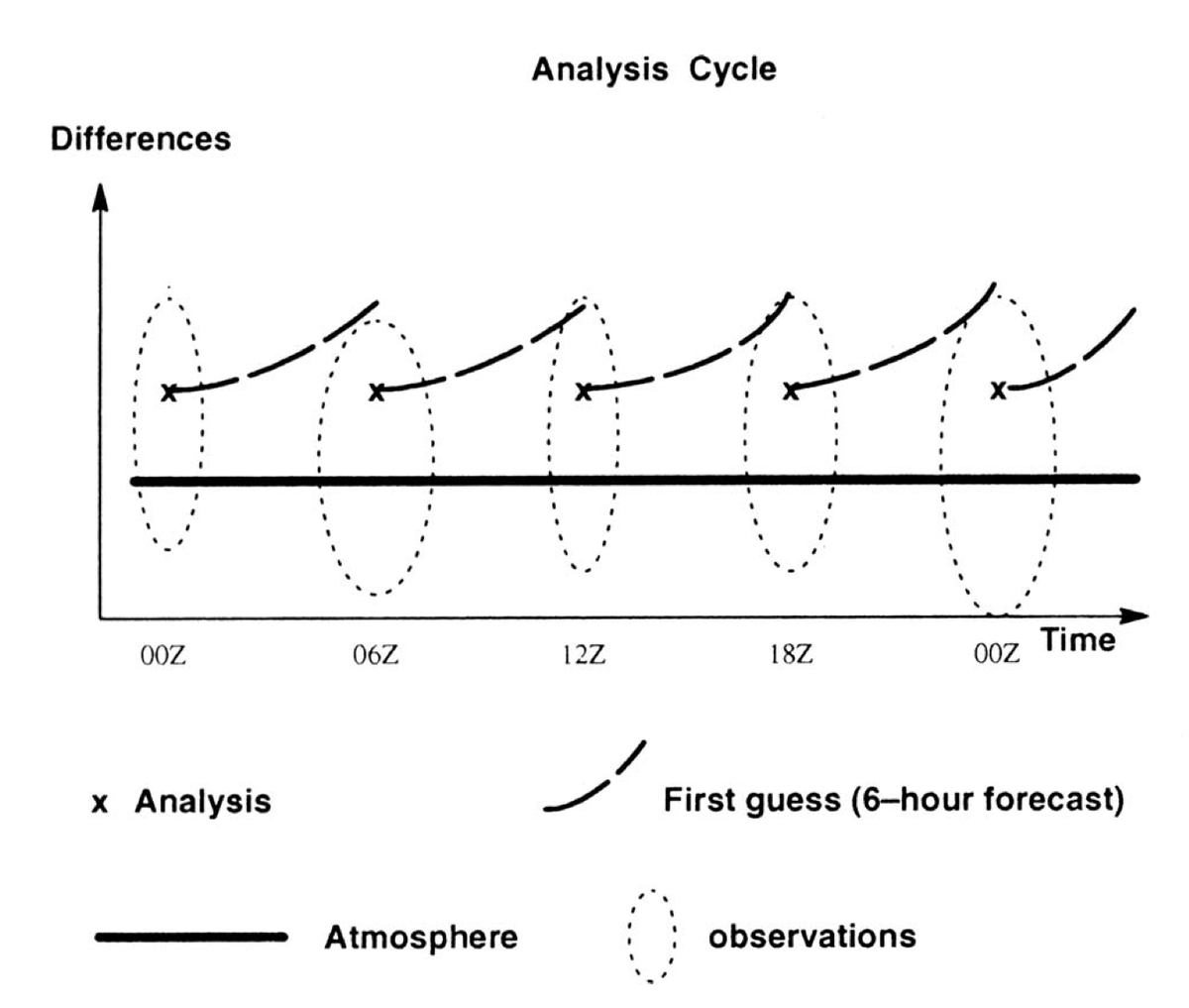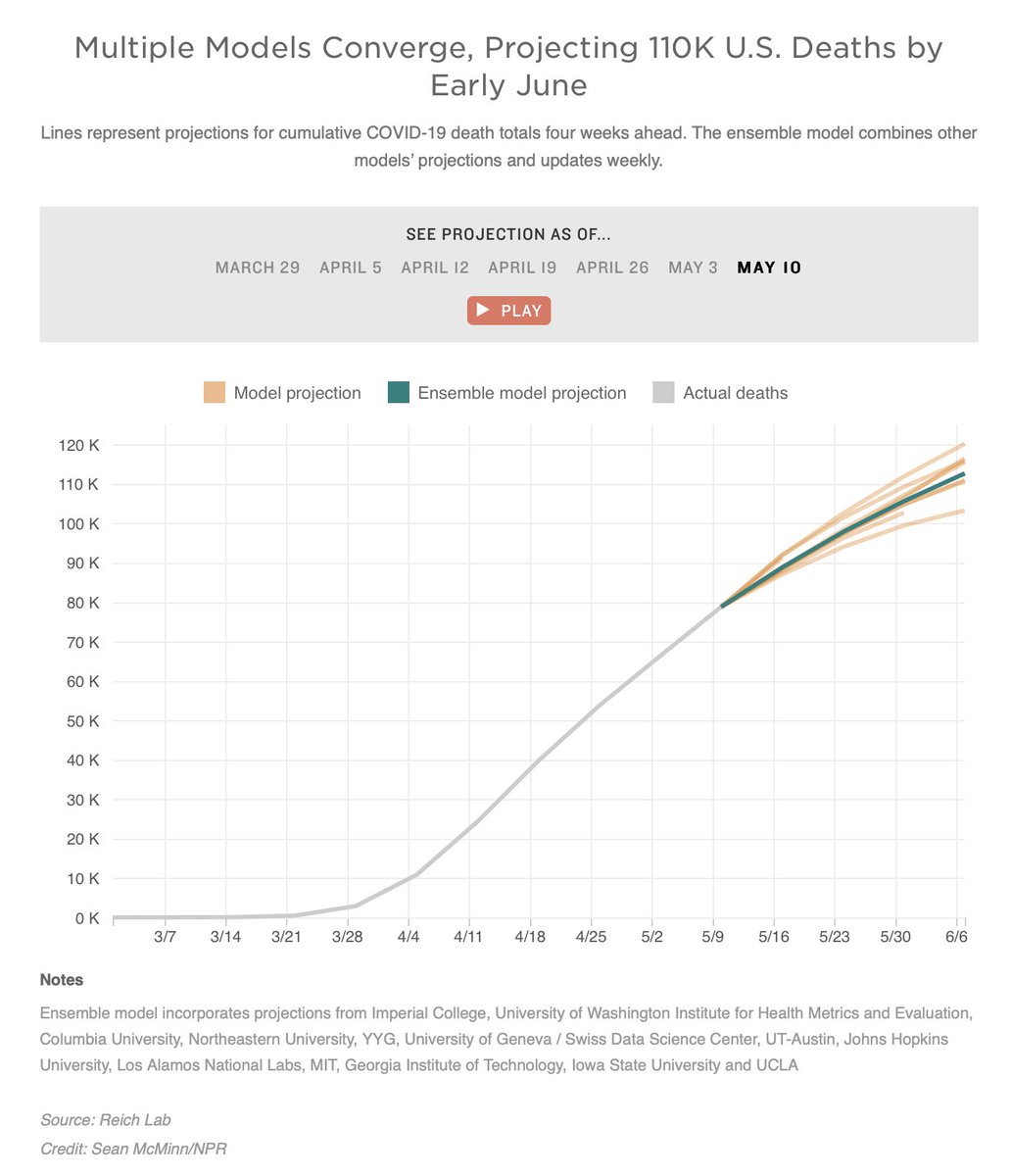Ensemble forecasting has been the gold standard in Numerical Weather Prediction since the 1990s when it was introduced by one of my PhD advisors Eugenia Kalnay.
https://journals.ametsoc.org/doi/pdf/10.1175/1520-0477%281993%29074%3C2317%3AEFANTG%3E2.0.CO%3B2">https://journals.ametsoc.org/doi/pdf/1...
https://journals.ametsoc.org/doi/pdf/10.1175/1520-0477%281993%29074%3C2317%3AEFANTG%3E2.0.CO%3B2">https://journals.ametsoc.org/doi/pdf/1...
Initially proposed by Edward Lorenz in his foundational work on Chaos Theory, it is used to quantify the impact of uncertainty on forecasts.
It has been incredibly effective. https://twitter.com/ChrisDanforth/status/1088583189285658624">https://twitter.com/ChrisDanf...
It has been incredibly effective. https://twitter.com/ChrisDanforth/status/1088583189285658624">https://twitter.com/ChrisDanf...
Basically, when you aggregate many different predicted versions of the future, you get better estimates of what will happen, even when the details are hard to quantify. https://twitter.com/ChrisDanforth/status/967014588653940736">https://twitter.com/ChrisDanf...
This ensemble methodology can be used in other areas of science where we want to make forecasts, especially when
(1) the system state is hard to measure precisely, or
(2) there are important underlying processes that are not well characterized by the mathematical model.
(1) the system state is hard to measure precisely, or
(2) there are important underlying processes that are not well characterized by the mathematical model.
COVID-19 case numbers are underestimated in uncertain and complicated ways, and human behavior is difficult to predict. https://twitter.com/jkbren/status/1259921246130765825">https://twitter.com/jkbren/st...
Our actions matter tremendously https://twitter.com/zeynep/status/1260209574751199232">https://twitter.com/zeynep/st...
Just like weather & climate simulations, the big pandemic models have different underlying assumptions, strengths, weaknesses, etc.
“Different Coronavirus Models Are Starting To Agree: 110,000 Dead By June 6”
https://www.npr.org/sections/health-shots/2020/05/13/855038708/combining-different-models-new-coronavirus-projection-shows-110-000-deaths-by-ju">https://www.npr.org/sections/...
https://www.npr.org/sections/health-shots/2020/05/13/855038708/combining-different-models-new-coronavirus-projection-shows-110-000-deaths-by-ju">https://www.npr.org/sections/...
Some will be right for the wrong reasons...
lots of functions look like a cubic if you zoom in closely https://twitter.com/xkcdComic/status/1258164320044609537">https://twitter.com/xkcdComic...
lots of functions look like a cubic if you zoom in closely https://twitter.com/xkcdComic/status/1258164320044609537">https://twitter.com/xkcdComic...
So: combining the COVID prediction models into an ensemble is a good idea! https://twitter.com/reichlab/status/1257740028635222018">https://twitter.com/reichlab/...

 Read on Twitter
Read on Twitter



